More information is trickling out on the Tesla Model 3 in regards to its interior features and other aspects.
Until recently, the Model 3 had only been delivered to select Tesla employees, but some cars are now beginning to make their way to Tesla storefronts, with digging up a video of an employee showing potential customers around the interior of the new EV. That video, along with a comprehensive post over at the Model 3 Owners Club forum, has provided us with some new intel on the hotly anticipated four-door. As you probably know, the Model 3 is a bit of atypical automobile, so we’re going to run through a couple of the oddities of the Model 3 that have surfaced in last few days.
5. The Keycard
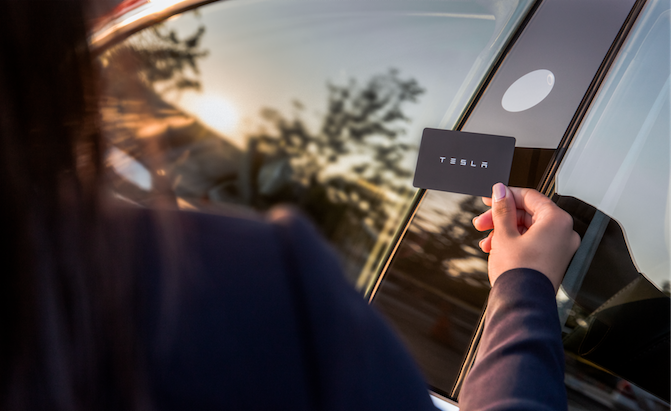
We’ve known about this feature for a while, but it’s one of the odder aspects of the Model 3. The NFC chip keycard will be used to unlock the doors by simply tapping it on the B-pillar. The Model 3 will also come with a smartphone app capable of unlocking and locking the car. Once the app is linked to your specific vehicle, you just have to walk near the car and it will unlock. It’s like keyless entry but linked with your phone instead of a traditional key fob.
ALSO SEE: Tesla Model 3 Long Range Returns 126 MPGe
4. Audio Playback Options are Limited – But More are Coming
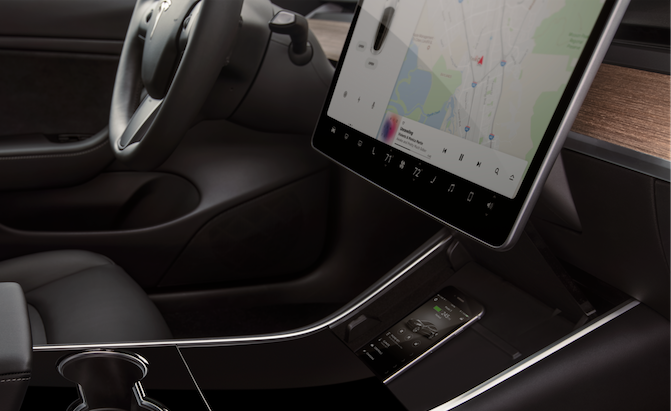
This week, some publications reported the Model 3’s Bluetooth audio streaming is currently disabled, but will eventually become available with an over-the air update. It was initially thought audio could not be streamed through the car’s USB outlets, but it will apparently work fine if the USB is in FAT32 format. A spokesperson said all audio playback functions listed here will be on the production car, including Bluetooth streaming and internet streaming radio. That latter part likely refers to the Slacker internet radio app, which is currently functional in the car, but Tesla has also been rumored to have its own audio service in the works called TTunes. FM radio is currently disabled on the car, but will also become available with an update. There won’t be AM radio at any point, so if you enjoy talk radio, make sure to have some podcasts loaded up.
3. The Wiper Controls
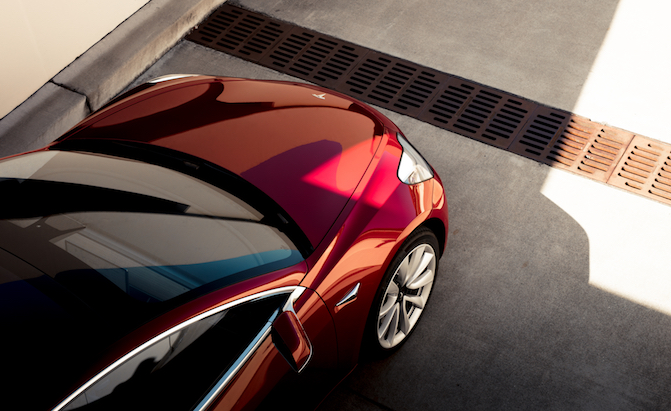
The Model 3 will feature a traditional wiper stalk, but the stalk will only switch the wipers on and off. If you want to change the speed of the wipers, you’ll have to do it via a touchscreen control (more on that soon). The wipers will have three speeds: slow, fast and intermittent. It won’t be too big of a deal once buyers get used to it, but having them look over to the touchscreen and find a menu to adjust the wiper speed while driving in the rain doesn’t sound like the most user-friendly solution.
ALSO SEE: How Much Will a Tesla Model 3 Cost?
2. The Huge Center Touchscreen
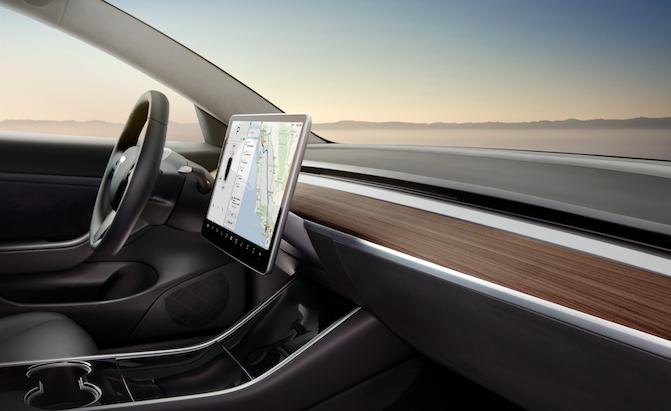
While very neat, we think the massive 15-inch touchscreen display will take some getting used to for many customers. It’s not the performance that makes us believe that (it looks pretty responsive in the demonstration video), but more so the number of functions it takes care of. The side mirrors, HVAC, window defrost, audio system, audio volume, door locks, seat heaters, exterior lights, and navigation will all be controlled through the touch display. This strategy has definitely simplified the interior layout and reduced the number of buttons, but if you don’t enjoy flipping through pages to access functions, you may find it a bit tedious. Many auto reviewers complain about a lack of knobs in modern cars, as touch functionalities can be cumbersome, so we’ll see how the Model 3’s display handles its myriad of assigned tasks.
1. The Lack of a Traditional Speedometer
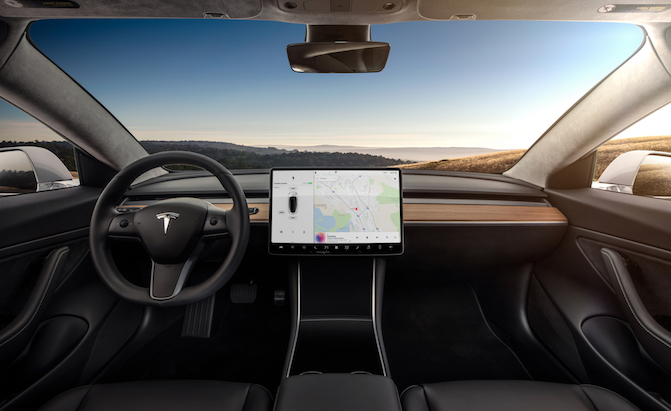
We’ve known for a while that the Model 3 would not have a traditional speedometer. The task of providing a speed readout will be handled by the center display (surprise!) and shown in the top left-hand corner of the screen. This decision was likely made due to the Model 3’s autopilot functionality, but it also follows the minimalist ethos the automaker chased with the 3’s cabin. In case you’re wondering, it won’t be offered with a head-up display either, so you’ll always have to rely on the center display if you want to know how fast you’re going. The display will also communicate other things a center cluster might, such as the vehicle’s battery life.
As we mentioned earlier, the Model 3 is an atypical car that is clearly meant to be an industry disruptor, so we’re not surprised to see these quirks. We don’t think they’ll be deal breakers, especially for those extra-eager Tesla fans who have already placed a pre-order, but drivers used to the functionalities of more run-of-the-mill cars may need some time to get used to the way it operates. We can’t wait to have a go and find out for ourselves how user-friendly (or not) the first mass-market Tesla is.



Leave a Reply